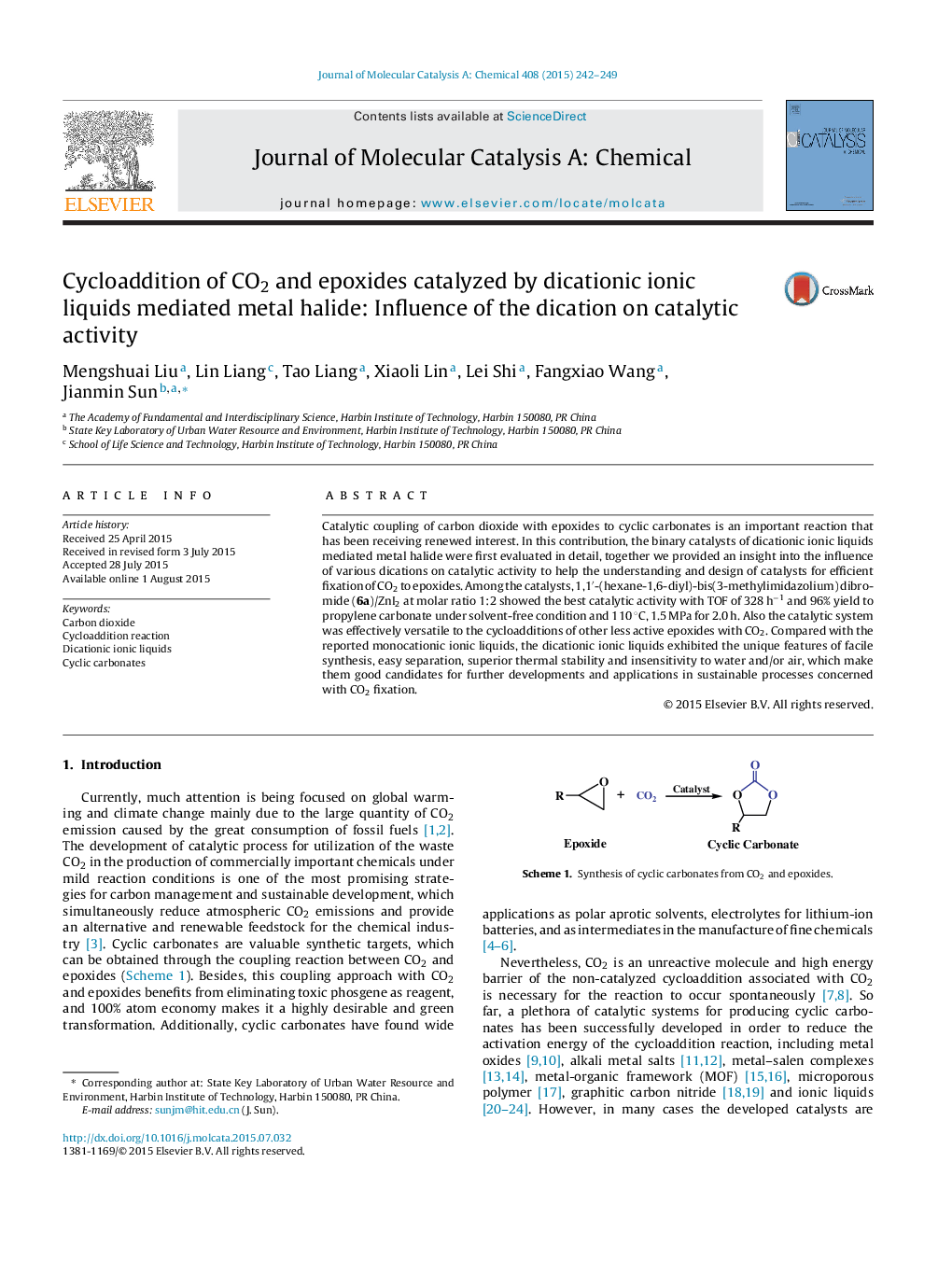| Article ID | Journal | Published Year | Pages | File Type |
|---|---|---|---|---|
| 64881 | Journal of Molecular Catalysis A: Chemical | 2015 | 8 Pages |
•A series of dicationic ionic liquids were synthesized and thoroughly characterized.•Dicationic ILs were thermostable, water and/or air insensitive and easy-to-handle.•Dicationic ILs/ZnI2 showed significant activity for coupling of CO2 with epoxides.•The catalytic process was performed under mild conditions without additional solvent.
Catalytic coupling of carbon dioxide with epoxides to cyclic carbonates is an important reaction that has been receiving renewed interest. In this contribution, the binary catalysts of dicationic ionic liquids mediated metal halide were first evaluated in detail, together we provided an insight into the influence of various dications on catalytic activity to help the understanding and design of catalysts for efficient fixation of CO2 to epoxides. Among the catalysts, 1,1′-(hexane-1,6-diyl)-bis(3-methylimidazolium) dibromide (6a)/ZnI2 at molar ratio 1:2 showed the best catalytic activity with TOF of 328 h−1 and 96% yield to propylene carbonate under solvent-free condition and 110 °C, 1.5 MPa for 2.0 h. Also the catalytic system was effectively versatile to the cycloadditions of other less active epoxides with CO2. Compared with the reported monocationic ionic liquids, the dicationic ionic liquids exhibited the unique features of facile synthesis, easy separation, superior thermal stability and insensitivity to water and/or air, which make them good candidates for further developments and applications in sustainable processes concerned with CO2 fixation.
Graphical abstractFigure optionsDownload full-size imageDownload high-quality image (280 K)Download as PowerPoint slide
